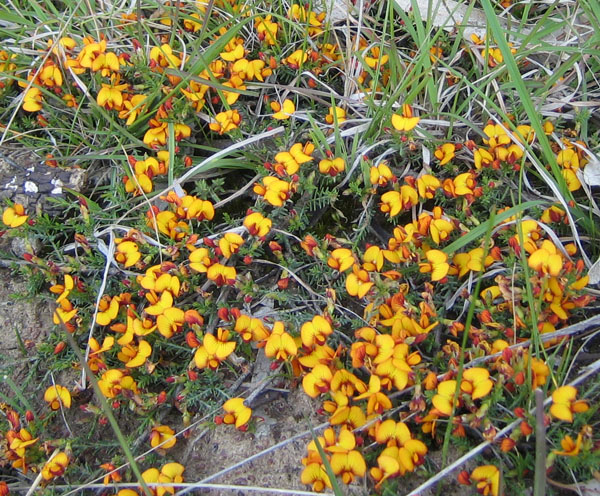
See area 3 on aerial photo map. For the ownership history of this land see Greenvale Sanatorium.
This area has considerably higher plant species diversity than the rest of the park, and lower levels of weeds. It was fenced with the help of a Natural Heritage Trust Grant obtained by Friends of Woodlands Historic Park in 2005/2006. Although there are cleared areas, it has mostly intact Red Gum Woodland in the lower parts, with some areas of Grey Box. Manna Gum also occurs in the eastern half, while Yellow Box is uncommon except on the slopes north of the water tower, which is regenerating Red Gum-Yellow Box woodland. Down the hill to the east of the water tower there is a patch of Drooping Sheoke.
There are some very intact areas of ground cover with a mix of native grasses, wild-flowers such as Rice-flower and several species of lily being common. Seventeen of the plant species in this area have not been recorded in the rest of the park, and there are other species in the area that probably no longer occur in the rest of the park. On the other hand some of the species have populations too small to be considered viable.
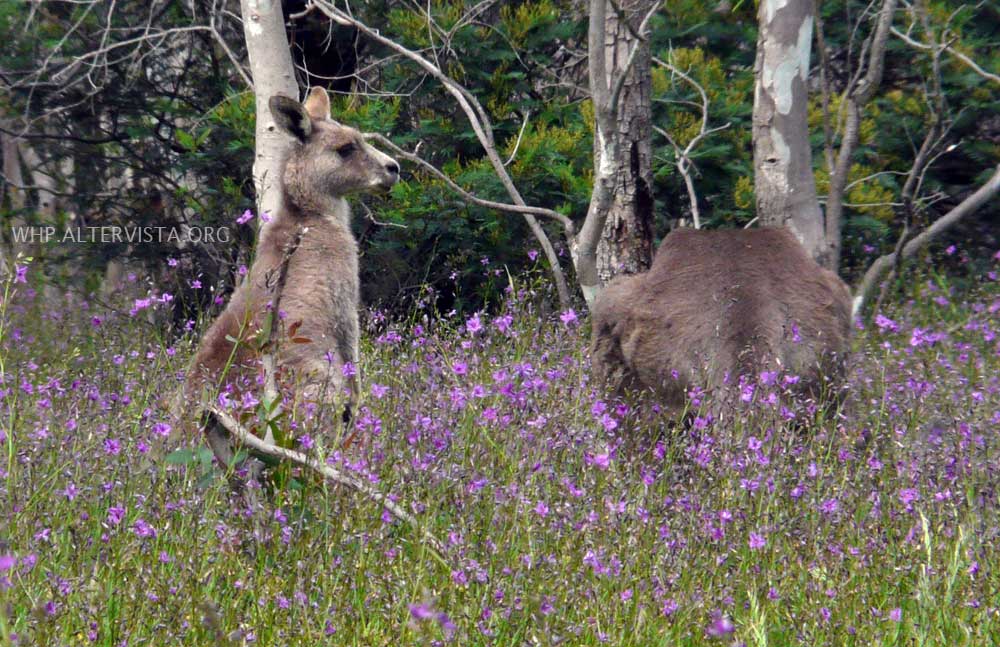
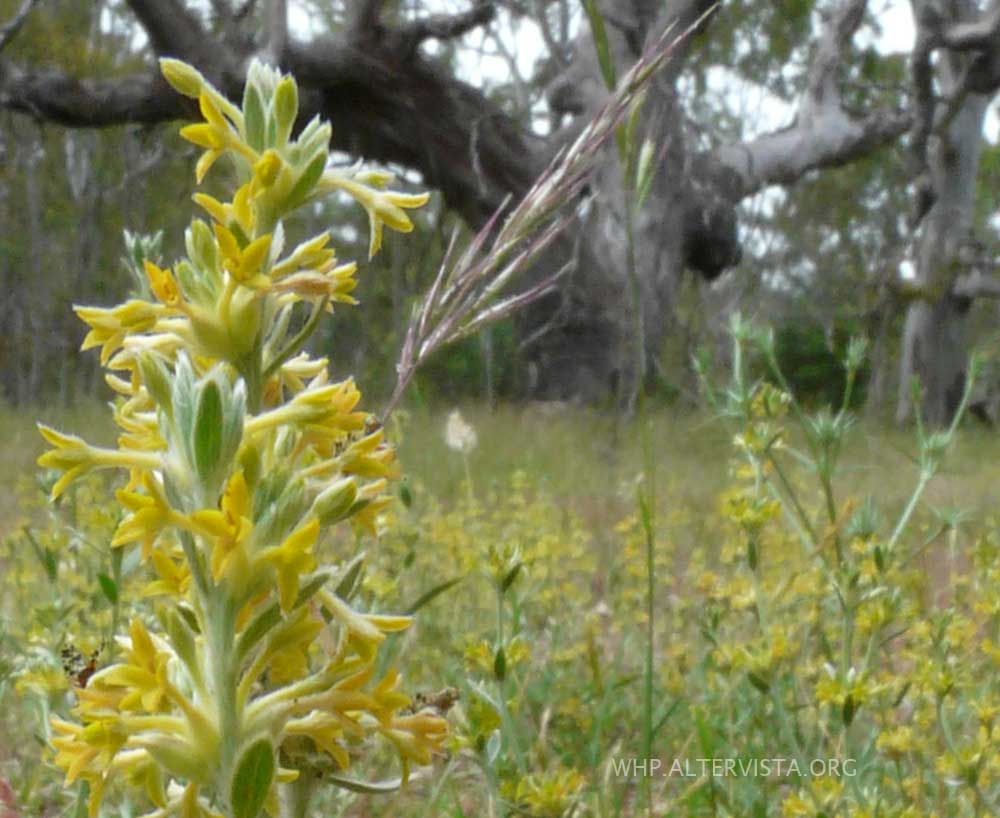
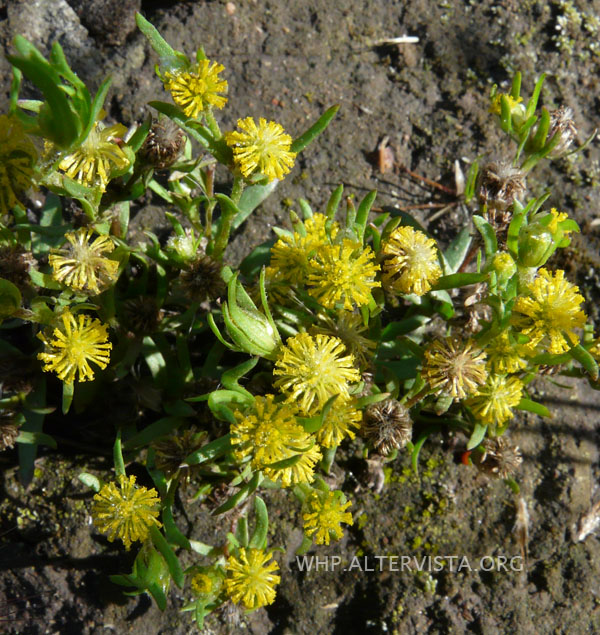
The quality of the ground cover is very patchy, due to the way the land has been used and abused. Uses include not just cattle grazing but such things as army manoeuvres and burial of hospital rubbish. In the south-east corner there is a bulldozer scrape made by the C.F.A. many years ago. Wheel ruts are visible in at least eight places, three of them made by Parks Victoria four wheel drives. The rest were made by trucks, most recently Telstra contractors removing the old telephone poles. A power-line from Providence Road to the north end of the sanatorium site was removed in 2011. It's path can be seen on the aerial photo. The 1.15m diameter Greenvale to Sydenham water main crosses the area near it's northern end.
Almost as destructive as the water main construction was the week of the 8th to 12th of February 1971, when the area was the venue for the Local Government Engineers Association field days. These involved the movement of large numbers of vehicles and heavy machinery in the area between Providence Road and the former Sanatorium, then known as Greenvale Village for the Aged. The legacy of this week is still visible as areas of heavily compacted soil where almost nothing grows. A short section of concrete kerb in the middle of the bush is possibly the result of a machinery demonstration in this week.
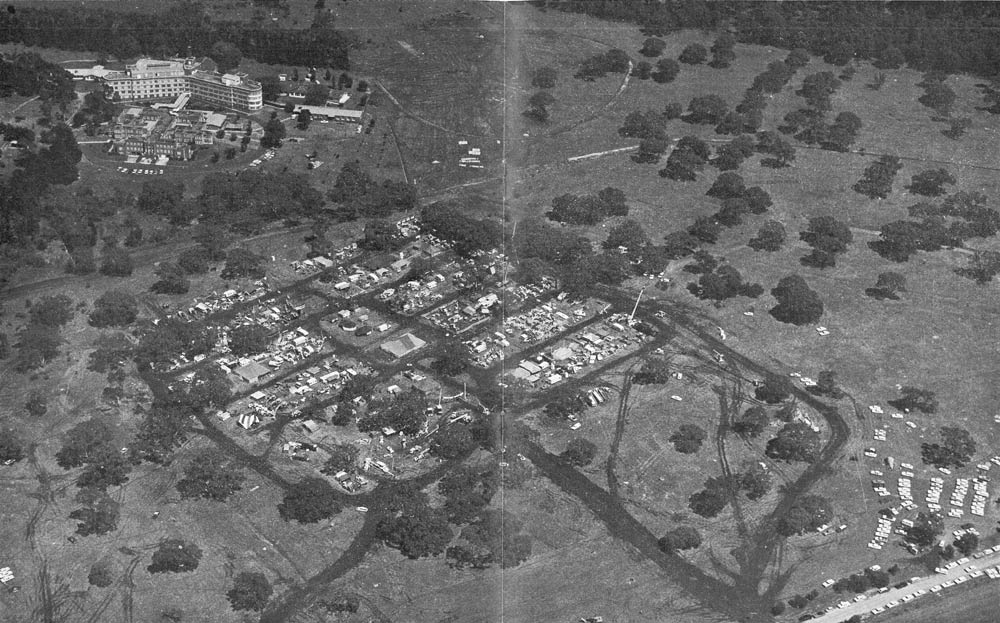
Drains, Swamp and Creek
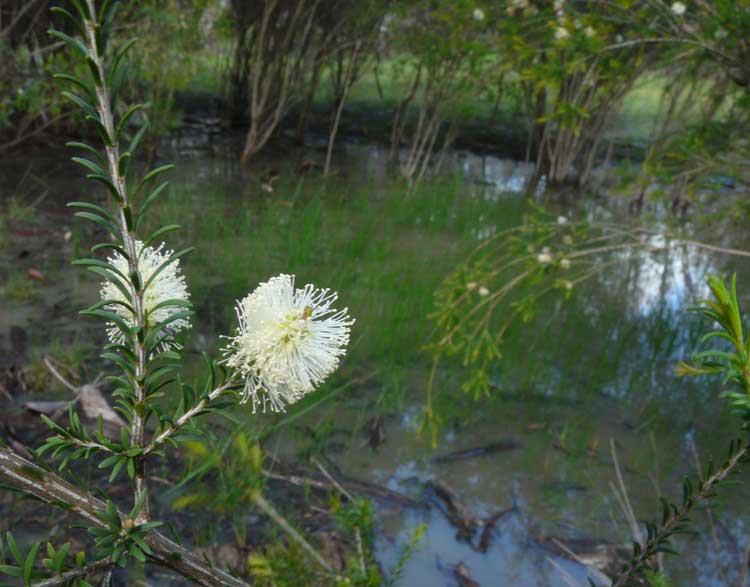
There are a number of drainage ditches to the north of the sanatorium site, which run across the slope and seem to have been designed to reduce water-logging in the area to the north of the water main easement, where there is a large area of cattle pugging. This area also has three small natural pools which fill in wet years, providing habitat not otherwise represented in the park except in artificial form. One of the pools has Paperbarks growing around it. The species (Melaleuca parvistaminea) is one which does occur naturally a bit further west of Melbourne, but it is not clear if this occurrence is natural, since the same species along with Swamp Paperbark has been planted along the boundary of the police land to the south of Gellibrand Hill.
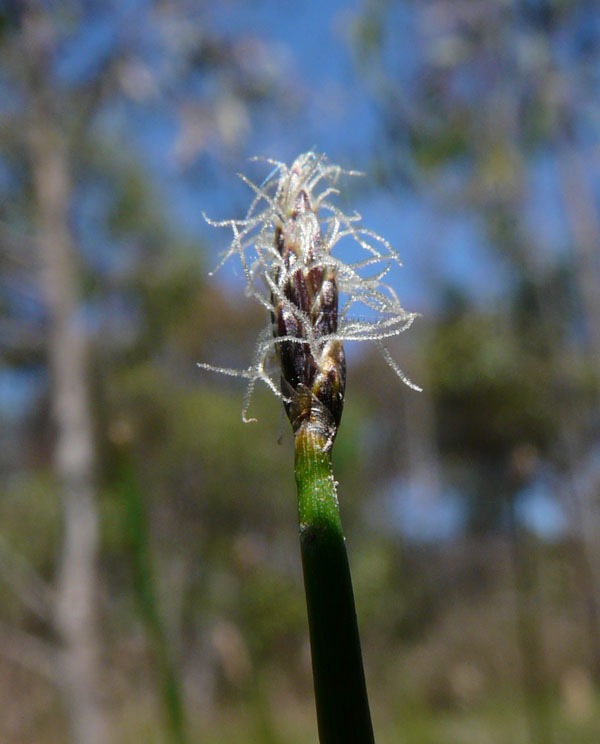
The affect of the contour drains was reversed by the later construction of a large drain along the western boundary of the Sanatorium site which diverted toward the north run-off which would have originally flowed south into Greenvale Creek. This drain was in turn disrupted when the new owner of the site constructed his fence. Water still flows north, but needs higher rainfall to do so. The drain is eroding and the water is therefore muddy when it reaches the swampy area described above. Only one of the pools is not filled by this drainage and therefore contains clean water.
On the western site of the sanatorium site, the valley floor that becomes Greenvale Creek has also suffered several drastic changes in the frequency and intensity of water flows. There is still a concrete drain pipe running into it from the sanatorium site, but this obviously has a lot less water coming out of it than it did before the sanatorium buildings were demolished. Overall this valley is drier than it would have been before construction of the sanatorium. We can only hope that Melbourne Water imposes a design on any future development of the site that restores natural flows as much as possible.
Weeds
The cleared areas along Providence Road were in the past slashed annually as a fire break, as was the track running north from the Sanatorium site. The water-main easement across the north end is still slashed (although for a few years it wasn't, and there is no good reason why it should be). As a result there are extensive patches of Chilean Needle Grass in these areas. There is a patch next to the water tower, and some smaller patches in the cleared area to the north of it. Otherwise the only Chilean Needle Grass is under mature Red Gums, where the seed has presumably been deposited by Kangaroos who graze on the other side of Providence Road. Most other high priority weeds are at low or very low levels after many years of effort by volunteers. For example in the top end of the Greenvale Creek valley there was about half a hectare of blackberries. This area has been rehabilitated with the help of a grant from Melbourne Water.
A number of patches of Kikuyu have been eradicated, but since it covers most of the Sanatorium site it is necessary to spray along the fence annually to prevent it from encroaching.
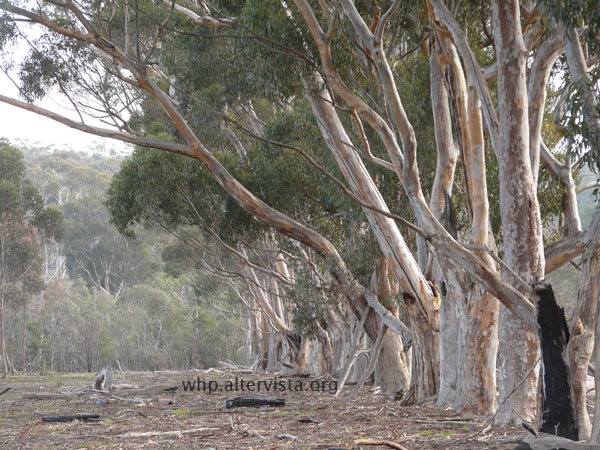
There is a row of polled Sugar Gums to the north of the Sanatorium access road, interrupted by a short row of Hawthorns. The Gums and Hawthorns are in line with the row of pine trees marking the northern boundary of the original Sanatorium, and were presumably planted at the same time. Many Sugar Gum saplings are found to the south of the row, and a few to its north. There are also some young Hawthorns in the area.
Sugar Gums also invade from the plantation, from the Sanatorium site itself and from the Sanatorium access road. In the north-western part of the land Yellow Gum also invades from the plantation. Saplings of one or the other species have been found up to 40m from the western boundary and 150m from the northern boundary with the plantation. They also occur up to 70m from the western side of the Sanatorium site. Sugar Gums have a very high impact, with almost nothing able to grow under them. In several places where larger saplings were killed a mass of wild-flowers was seen in the following year.
Other Issues
On the aerial photo you can see a light coloured area of bare ground west of the northern part of the Sanatorium Site. Granitic sand has presumably been extracted here for use by the Sanatorium. There is a deep erosion gully but part of the area has re-vegetated naturally. The topsoil was stockpiled and could theoretically be replaced on the area which has not re-vegetated, but it would be difficult to prevent it from washing off again.
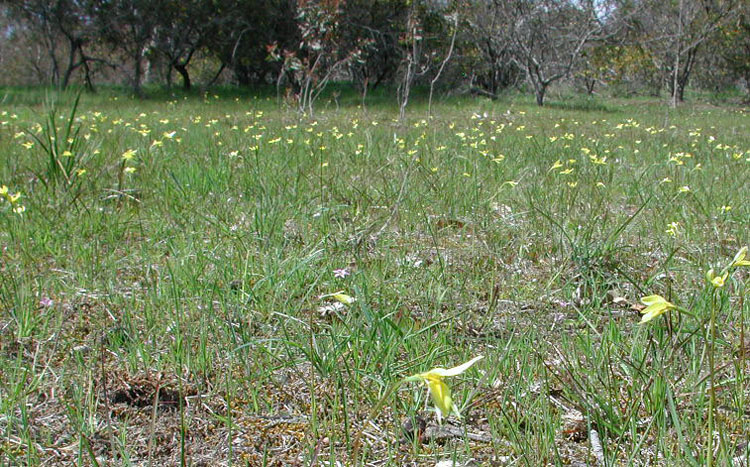
One of the major threats to this part of the park, apart from the proposed housing development in the middle of it and all the other threats, is the proliferation of trees since cattle were removed. Dense growth of Red Gum saplings has already all but eliminated the grass and herb layer in many areas. In some of these areas Golden Moth Orchids and the daisy Scaly Buttons were formerly common - these species are now hard to find. On the plus side the saplings help prevent the damage that would be caused by vehicle incursions, although they don't stop trail bikes unfortunately.
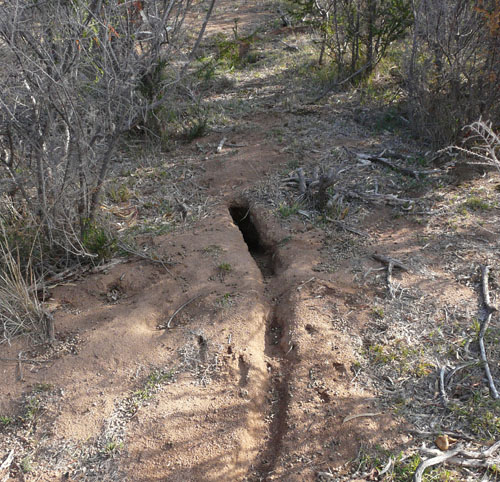
In the water tower area there is a problem with dense growth of the prickly shrub Hedge Wattle. The prickly scrub and the sandy soil mean that rabbits are also a problem here, with many small warrens and a few larger ones.
The water tower itself is the ugliest of any structure ever built for the Sanatorium or Hospital, and now that the ladders have been removed is of interest only to the species Homo not-so-sapiens, who like to scribble on it with spray paint. It should be demolished if this can be done without destroying the surrounding vegetation.